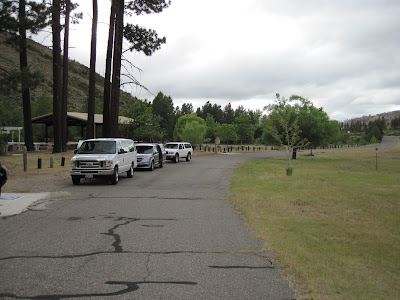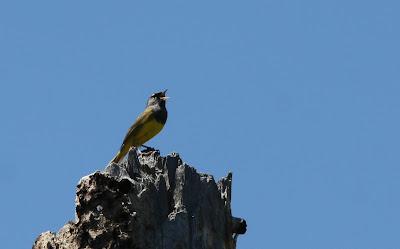Levi and I aboard the canoe at Scarborough Marsh
While paddling up this river, small clusters of Glossy Ibis frequently wheeled overhead.
Being a tidal marsh, the depth of the water rapidly changed during our time on the river.
After a couple hours of paddling, we arrived back at the Scarborough Marsh Audubon Center where we had rented the canoe. Not entirely finished with the Scarborough area, we walked a quarter mile down the road to the Eastern Trail, a wide gravel pedestrian and bike path that also traverses Scarborough Marsh. With Song Sparrows singing in almost every tree, Snowy Egrets and other wading birds hunting along the mud banks, and numerous gulls swirling about, the bird life was drastically denser than on our canoeing excursion. Unfortunately, hunger and diminishing snack supplies turned us around a short distance down the trail.
As you can see, the Eastern Trail travels in a straight line for quite a distance. Actually, this trail is part of the East Coast Greenway. Starting in northern Maine, the East Coast Greenway follows the coast all the way to Key West in Florida.
Four-spotted Skimmer
Song Sparrow
Glossy Ibis
To close out our first complete day in Maine, we took the bus to the Old Port in downtown Portland. Chocked full of redundant gift shops, this historic district is known for its 19th century architecture and fishing piers. While we strolled the cobbled streets, Chimney Swifts swirled above the old brick buildings. Eventually, we found our way out to a public pier. Fringed with reckless casting fishermen, we managed to get our eyes on a low flying Black-crowned Night-Heron just before it disappeared behind another pier.
With trails winding through and around it, we decided to spend our last morning before camp exploring the golf course near the hotel. Over rolling hills, asphalt paths covered the massive golf course in numerous loops. Edged with towering trees, the Sable Oaks Golf Club had great wildlife habitat including cattail ponds, swamps, and thickets.
Red-winged Blackbird and Baltimore Oriole outside the hotel.
Wild Turkeys grazing on the hotel's front lawn.
Sable Oaks Golf Course
Black-throated Green Warbler
Thickets, Forests, and Greens
Ovenbird with a Mouthful
Ebony Jewelwing
Dirt trails through densely wooded areas were abundant on the perimeter of the golf course.
Eastern Bluebird
North American Porcupine
Next up: I will cover the other leg of our trip . . . Hog Island!



































































